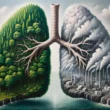UPTAKE of health services, especially sexual reproductive health by adolescents and young people remains low despite that they face an exceptionally high burden of HIV.
Dr Lilian Benjamin Mwakyosi, Executive Director and founder of DARE organization, a young women-led NGO that focuses on promoting young peoples’ leadership and involvement in designing and implementing innovative approaches to enhance access to differentiated sexual and reproductive health services in Tanzania, told a plenary of the International Conference on Aids and STIs in Africa (ICASA), that there is need to address the barriers to access to services by young people to address the low uptake.
ICASA was held in Harare in December under the theme; AIDS IS NOT OVER: Address inequalities, accelerate inclusion and innovation.
“My experience working with adolescents and young people over the last seven years has indicated that we have low uptake of services by adolescents and young people especially SRHR. This can be evidenced by the number teenage pregnancies,” said Dr Mwakyosi.
According to the World Health Organisation, adolescent pregnancy is a global phenomenon with clearly known causes and serious health, social and economic consequences. Adolescent pregnancy tends to be higher among those with less education or of low economic status. Further, there is slower progress in reducing adolescent first births amongst these and other vulnerable groups, leading to increasing inequity.
As of 2019, WHO says, adolescents aged 15–19 years in low- and middle-income countries (LMICs) had an estimated 21 million pregnancies each year, of which approximately 50% were unintended and which resulted in an estimated 12 million births.
Preventing pregnancy among adolescents and pregnancy-related mortality and morbidity are foundational to achieving positive health outcomes across the life course and imperative for achieving the Sustainable Development Goals (SDGs) related to maternal and newborn health.
 “This is a sign that young people are sexually active. We need to move on from the denial that younger people are not sexually active. We are now also hearing a lot of times how adolescent girls and young women take up the highest burden of new HIV infections,” said Dr Mwakyosi.
“This is a sign that young people are sexually active. We need to move on from the denial that younger people are not sexually active. We are now also hearing a lot of times how adolescent girls and young women take up the highest burden of new HIV infections,” said Dr Mwakyosi.
In Tanzania, some studies have shown that every hour 2-3 young women aged 15-24 contract HIV and this is unacceptable.
“This doesn’t mean that we do not have systems and programmes in place to address these issues but it speaks to the fact that existing programmes do not meet the needs of these young women,” she added.
Some of the barriers to young people’s uptake of services include the conservative nature of African cultures and stigma which can impact not only access to HIV services but also to other SRHR services.
“Policies can also be a barrier to access to services. For instance, if you do not allow adolescent and young people below the age of 18 to access services without parental consent. Based on the environment that we are living in, no one will want open up freely to their parents that they are sexually active and they want services. Therefore, the more barriers we set the more difficult it becomes for young people to access services.
“I know that in some countries were access to contraception, age of consent to be like 18 and age of consent to HIV services being 15, and this still limits young people to access services. We need policies and systems that speak to each other, so that when a young person shows up for services, they are able to access holistic services without really worrying about age of consent,” said Dr Mwakyosi.
Feedback: cmwanawashe@marichomedia.com












